The Semi-Outdoor House in Sonobe by Tato Architects
Through a subtle interplay between walls, this building shakes up points of reference and conventions in terms of interior and exterior.
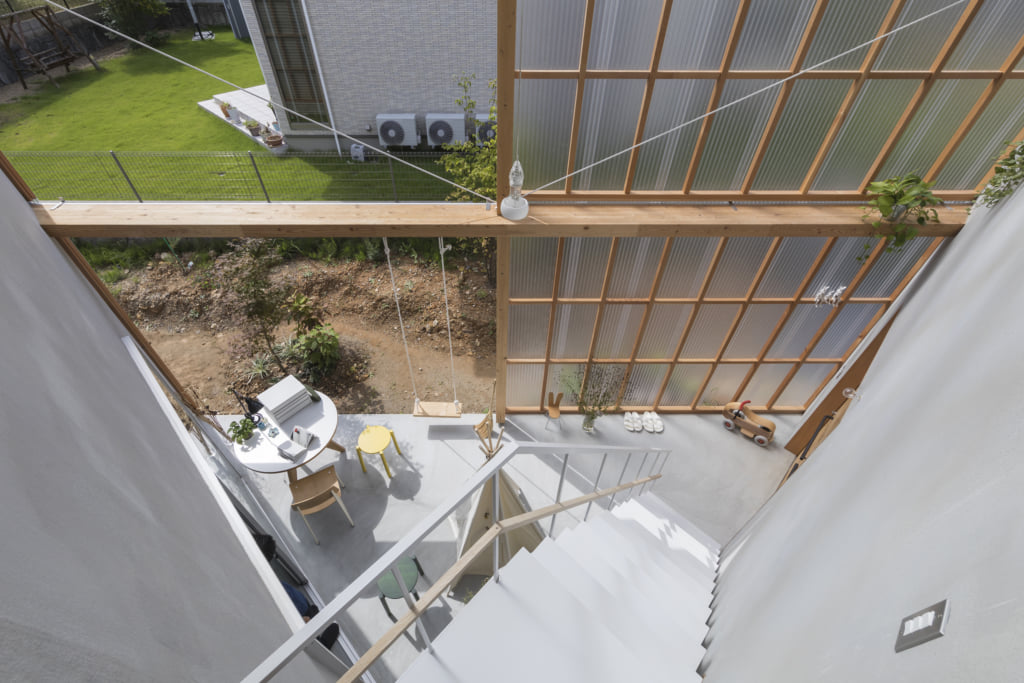
© Shinkenchiku Sha
In 2017, the architectural firm Tato Architects, founded by Yo Shimada, built a single-family house in the city of Natan, previously named Sonobe, in Kyoto Prefecture. Covering an area of 300 square metres, the residence stands out from the other identical lots in the residential district due to its unconventional configuration.
Based in his city of birth, Kobe, the architect, who graduated from Kyoto City University of Arts (KCUA) in 1997, wishes to revolutionise the world of design. A non-conformist, his philosophy is rooted in respect and appreciation for nature. Architecture and the environment need to coexist peacefully rather than by force.
Reinventing the veranda, a typical feature of the region
The House in Sonobe is located in a mountainous region with a cool, moist climate. As a result, it is customary for many of the residences to have a modest annex similar to a veranda. In winter, this improvised enclosure serves as a storehouse and a place for drying laundry.
Tato Architects drew inspiration from this local phenomenon when designing the main entrance to the house. A wooden swing suspended from a steel girder, a sink, a workspace… This wedge-shaped atrium becomes the most used space in the home as it can transform into an open courtyard connected to the garden. With the aid of removable panels made from corrugated polycarbonate, the south façade becomes a boundary between the private and public spaces. Mounted on thin visible wooden frames, these sliding modules spread over two floors make it possible to transform the appearance and layout of the interior.
Inside the residence that covers over 120 square metres, the bright rooms are labyrinthine. By means of a diagonal sweep with partitions inclined at a 45-degree angle, a variety of functional areas, some of which are semi-open, are available to the tenants. This sense of disorientation allows these minimalist landscapes to develop in a natural way.
House in Sonobe (2017), a project by architectural firm Tato Architects, can be viewed on their website.
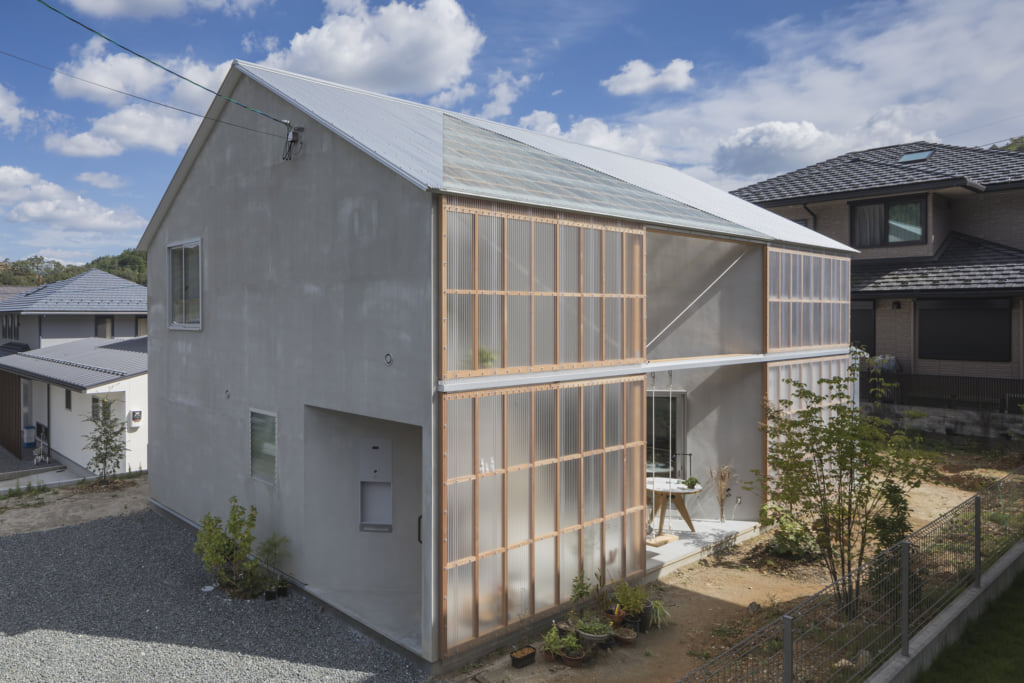
© Shinkenchiku Sha
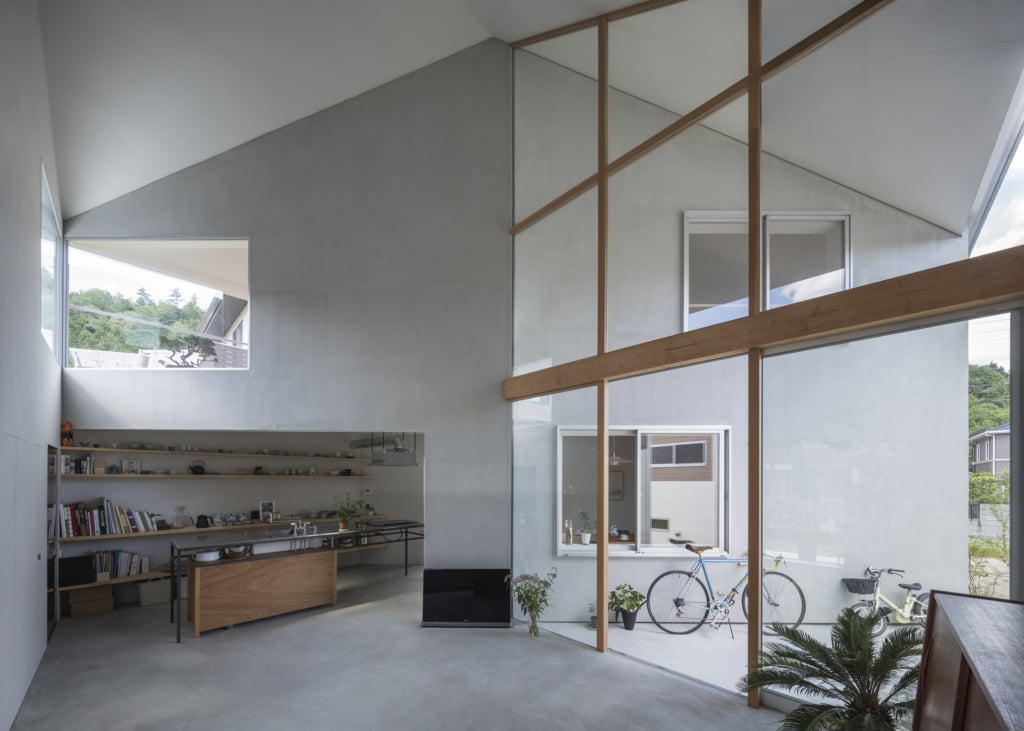
© Shinkenchiku Sha
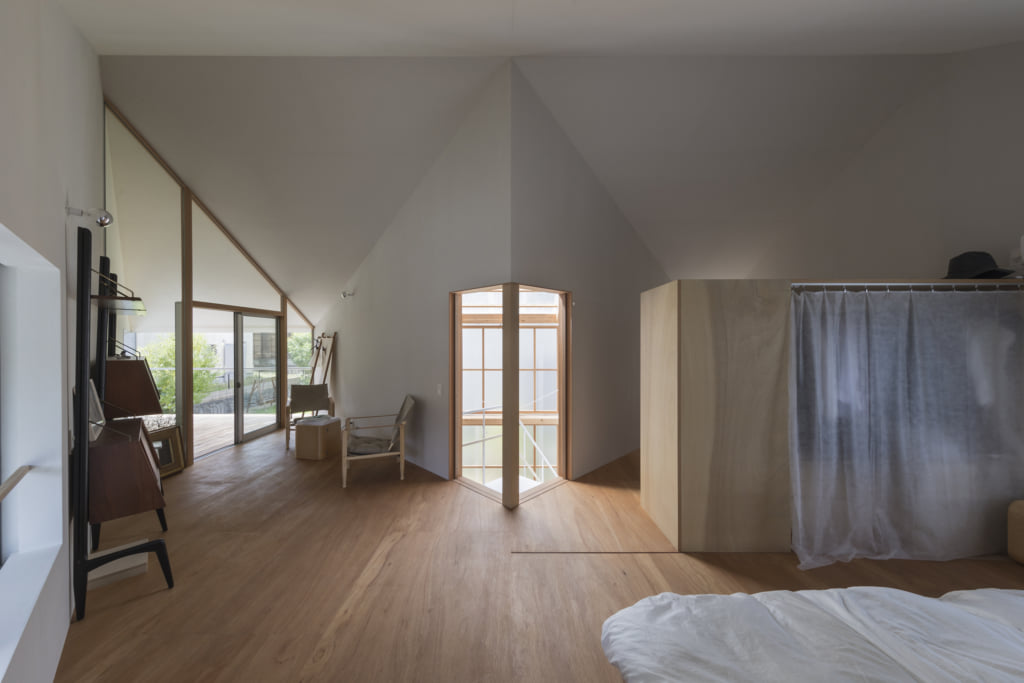
© Shinkenchiku Sha
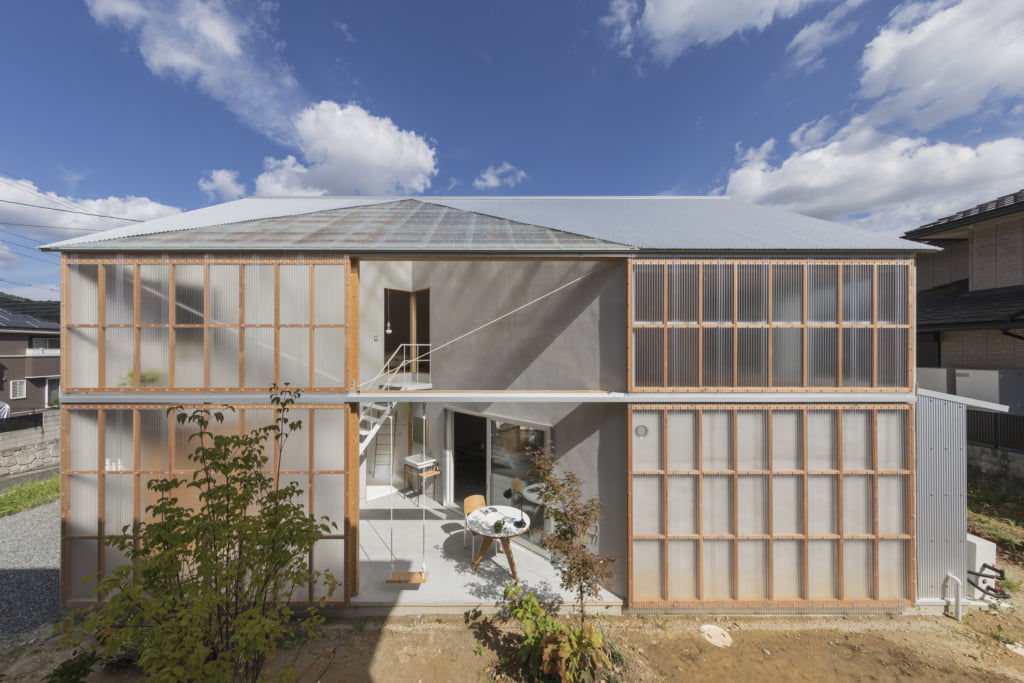
© Shinkenchiku Sha
TRENDING
-
A House from the Taisho Era Reveals Its Secrets
While visiting an abandoned building, Hamish Campbell discovered photographs the owner had taken of the place in the 1920s.

-
The Taboo-Breaking Erotica of Toshio Saeki
The master of the 1970s Japanese avant-garde reimagined his most iconic artworks for a limited box set with silkscreen artist Fumie Taniyama.

-
With Meisa Fujishiro, Tokyo's Nudes Stand Tall
In the series 'Sketches of Tokyo', the photographer revisits the genre by bringing it face to face with the capital's architecture.

-
Masahisa Fukase's Family Portraits
In his series ‘Family’, the photographer compiles surprising photos in which he questions death, the inescapable.

-
Hajime Sorayama's Futuristic Eroticism
The illustrator is the pioneer for a form of hyperrealism that combines sensuality and technology and depicts sexualised robots.





